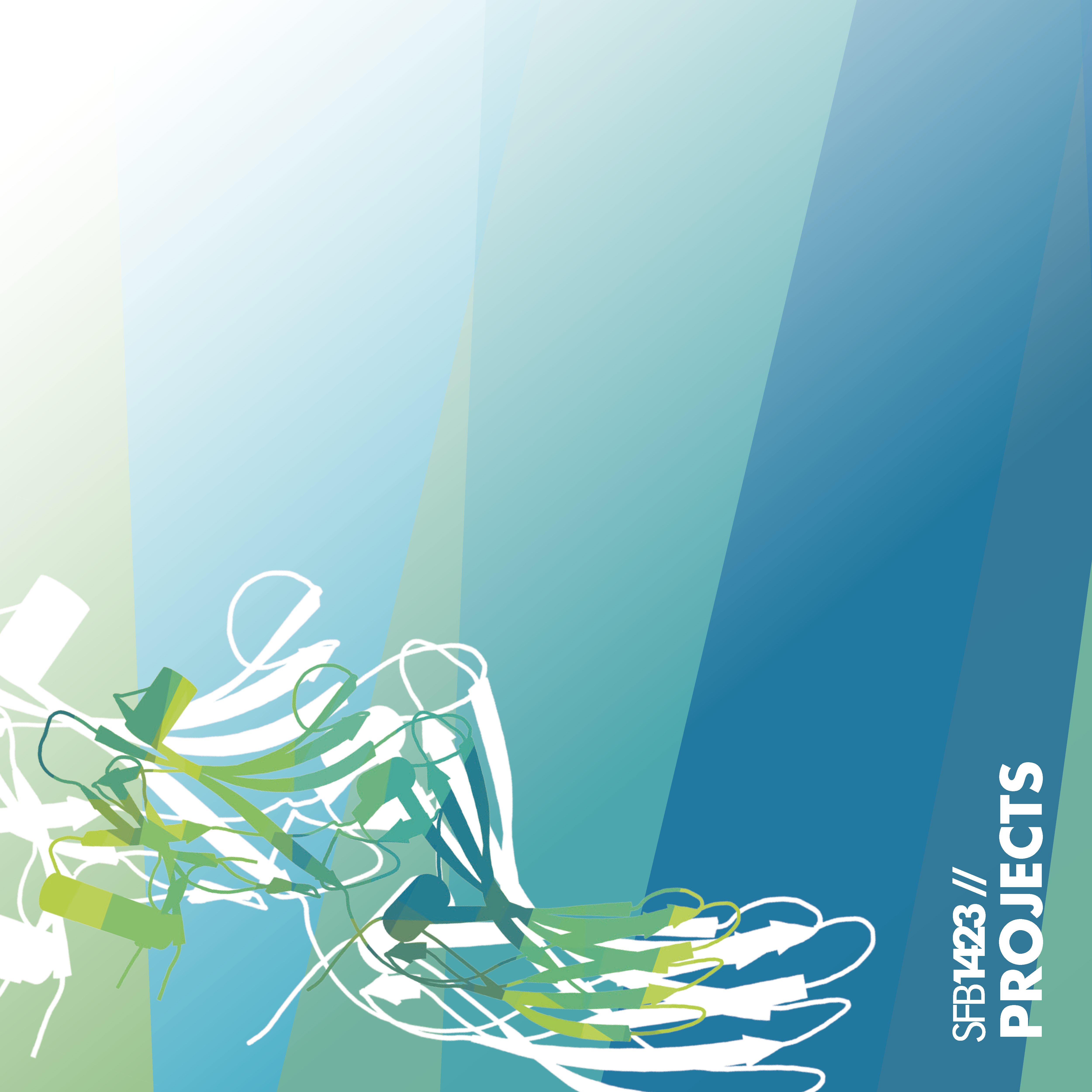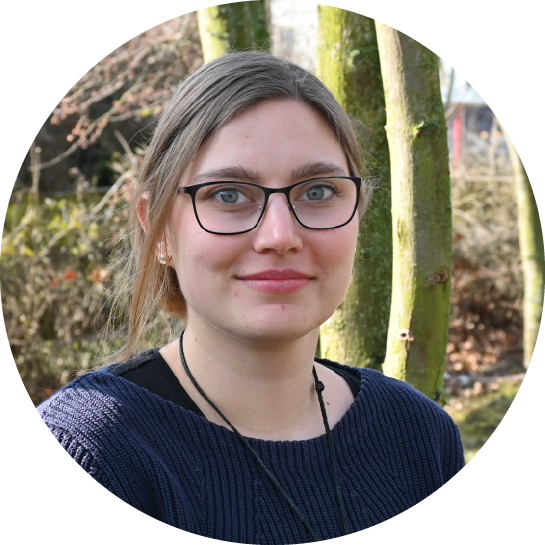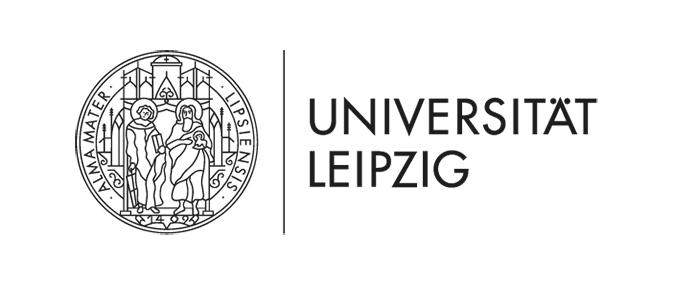

Project C05 – Structural dynamics of allosteric coupling in GPCRs
The overall goal of this proposal is to understand the structural dynamics of allosteric coupling in GPCRs as the basis for ligand efficacy and its implications for receptor/transducer-coupling selectivity. In the first funding period, we have developed novel single-color GPCR activation biosensors (so-called STICCERs) that report in real-time on the agonist-related conformational dynamics of extracellular receptor domains in intact cells. Using STICCER technology, we have uncovered that GPCR activation occurs by sequential conformational changes that eventually, after having passed several intermediate states, result in ligand-specific receptor states. In the upcoming funding period, we will develop dual-color allosteric GPCR biosensors that allow following activation-related extra- and intracellular conformational changes simultaneously. This technology will determine the kinetics of the entire allosteric coupling process at various GPCRs, with a major focus on peptide receptors. Finally, we will investigate whether the distinct, ligand-specific GPCR activation states translate into ligand-specific profiles of transducer coupling.
GPCR activation by agonist binding involves a process called ‘allosteric coupling’, i.e. structural changes in the extracellular ligand binding pocket are conformationally linked to the intracellular G protein-binding site. This is a reciprocal process as agonist binding leads to structural changes in the G protein-binding site and G protein-binding changes the conformation of the ligand binding pocket. In addition to G proteins, GPCRs can also signal through b-arrestin. Biased agonists are special agonists which favor one or more signaling pathways over others and may prove therapeutically beneficial. There is a growing body of evidence suggesting that some triggers for ligand bias are located in the extracellular domains of GPCRs. We have shown that some muscarinic agonists impair the closure of the ligand binding pocket and thereby hamper allosteric coupling to the intracellular binding site. These agonists are biased towards G protein-signaling and fail to recruit b-arrestin. Recently, the same mechanism has been demonstrated for dopamine D2, D3, serotonin 5-HT7 and b2-adrenergic receptors.
In this project we aim to study the structural dynamics of allosteric coupling during GPCR activation in intact cells. We will focus on the muscarinic M2 receptor, for which both inactive and active crystal structures are available, indicating the largest conformational changes in the ligand binding pocket upon receptor activation reported so far. By combining unnatural amino acid technology and biorthogonal labeling, we will install pairs of small organic fluorophores at specific sites on the receptor, according to procedures pioneered by us and well established in our lab. We will develop novel extracellular GPCR sensors based on Foerster resonance energy transfer (FRET) that allow monitoring reciprocal movements of single receptor helices and loops with high temporal and spatial resolution. By comparing the FRET signals upon stimulation with an entire toolbox of M2 receptor agonists of varying efficacy including a series of biased agonists, we aim at linking conformational changes of the ligand binding pocket with intracellular signaling profiles. Overall, our study will provide unprecedented structural insights into how to trigger specific intracellular signals from the extracellular side. We expect that our data will have an important impact for rational design of biased agonists with desired signaling profiles.
Contact

Prof. Dr. Andreas Bock (Project Leader)
University Medical Center Mainz
Institute of Pharmacy, Building 708, 1st floor
Langenbeckstraße 1, 55131 Mainz
Phone +49 6131 17 9187
E-Mail
Web unimedizin-mainz.de/pharmakologie

Prof. Dr. Irene Coin (Project Leader)
Leipzig University, Faculty of Life Sciences
Institute of Biochemistry
Brüderstrasse 34, D-04103 Leipzig
Phone +49 341 97 36980
E-Mail
Web uni-leipzig.de/icoinlab/arbeitsgruppe

Lisa Maria Martin (PhD Student)
Max Delbrück Center for Molecular Medicine
Unit: Signaling processes of receptors
Robert-Rössle-Strasse 10, D-13125 Berlin

Pauline Löffler (PhD Student, associated)
Leipzig University, Medical Faculty
Rudolf-Boehm-Institute of Pharmacology and Toxicology
Härtelstrasse 16-18, D-04107 Leipzig

Chiara de Faveri (PhD Student)
Leipzig University, Faculty of Life Sciences
Institute of Biochemistry
Brüderstrasse 34, D-04103 Leipzig

Antonio Lopez Sierra (PhD Student)
Leipzig University, Faculty of Life Sciences
Institute of Biochemistry
Brüderstrasse 34, D-04103 Leipzig

Dr. Yasmin Aigin (PostDoc)
Leipzig University, Faculty of Life Sciences
Institute of Biochemistry
Brüderstrasse 34, D-04103 Leipzig
Resources
- Fluorescence microscopy
- FRET / BRET
- High-throughput screening
- Nucleic acid and protein assays
Publications
Bock A, Irannejad R, Scott JD. cAMP signaling: a remarkably regional affair. Trends Biochem Sci. 2024 Feb 2:S0968-0004(24)00018-5.
Aydin Y, Böttke T, Lam JH, Ernicke S, Fortmann A, Tretbar M, Zarzycka B, Gurevich VV, Katritch V*, Coin I*. Structural details of a Class B GPCR-arrestin complex revealed by genetically encoded crosslinkers in living cells. Nat Commun. 2023; 14:1151.
Lohse MJ, Bock A, Zaccolo M. G Protein-Coupled Receptor Signaling: New Insights Define Cellular Nanodomains. Annu Rev Pharmacol Toxicol. 2023 Sep 8. doi: 10.1146/annurev-pharmtox-040623-115054. Epub ahead of print. PMID: 37683278.
Anton SE, Kayser C, Maiellaro I, Nemec K, Möller J, Koschinski A, Zaccolo M, Annibale P, Falcke M, Lohse MJ, Bock A. Receptor-associated independent cAMP nanodomains mediate spatiotemporal specificity of GPCR signaling. Cell. 2022 Mar 31;185(7):1130-1142.e11. doi: 10.1016/j.cell.2022.02.011. Epub 2022 Mar 15. PMID: 35294858.
Rudolf S, Kaempf K, Vu O, Meiler J, Beck-Sickinger AG*, Coin I*. Binding of Natural Peptide Ligands to the Neuropeptide Y5 Receptor. Angew Chem Int Ed Engl. 2022; 61:e202108738.
Bock A, Bermudez M. Allosteric coupling and biased agonism in G protein-coupled receptors. FEBS J. 2021 Feb 23. doi: 10.1111/febs.15783. Epub ahead of print. PMID: 33621418.
Işbilir A, Serfling R, Möller J, Thomas R, De Faveri C, Zabel U, Scarselli M, Beck-Sickinger AG, Bock A, Coin I, Lohse MJ, Annibale P. Determination of G-protein–coupled receptor oligomerization by molecular brightness analyses in single cells. Nat Protoc. 2021. https://doi.org/10.1038/s41596-020-00458-1.
Bock A, Annibale P, Konrad C, Hannawacker A, Anton SE, Maiellaro I, Zabel U, Sivaramakrishnan S, Falcke M, Lohse MJ. Optical Mapping of cAMP Signaling at the Nanometer Scale. Cell. 2020 Aug 20:S0092-8674(20)30943-0. doi: 10.1016/j.cell.2020.07.035. Epub ahead of print. PMID: 32846156.
Böttke T, Ernicke S, Serfling R, Ihling C, Burda E, Gurevich VV, Sinz A, Coin I. Exploring GPCR-arrestin interfaces with genetically encoded crosslinkers. EMBO Rep. 2020 Nov 5;21(11):e50437. doi: 10.15252/embr.202050437. Epub 2020 Sep 14. PMID: 32929862; PMCID: PMC7645262.
Holze J, Bermudez M, Pfeil EM, Kauk M, Bödefeld T, Irmen M, Matera C, Dallanoce C, De Amici M, Holzgrabe U, König GM, Tränkle C, Wolber G, Schrage R, Mohr K, Hoffmann C, Kostenis E, Bock A. Ligand-Specific Allosteric Coupling Controls G-Protein-Coupled Receptor Signaling. ACS Pharmacol Transl Sci. September 2, 2020 DOI: 10.1021/acsptsci.0c00069
Kaiser A, Coin I. Capturing Peptide-GPCR Interactions and Their Dynamics. Molecules. 2020 Oct 15;25(20):4724. doi: 10.3390/molecules25204724. PMID: 33076289; PMCID: PMC7587574.
Bock A, Schrage R, Mohr K. Allosteric modulators targeting CNS muscarinic receptors. Neuropharmacology. 2018; 136:427-37.
Serfling R, Seidel L, Böttke T, Coin I. Optimizing the genetic incorporation of chemical probes into GPCRs for photo-crosslinking mapping and bioorthogonal chemistry in live mammalian cells. J Vis Exp. 2018; 134.
Serfling R, Lorenz C, Etzel M, Schicht G, Böttke T, Mörl M, Coin I. Designer tRNAs for efficient incorporation of non-canonical amino acids by the pyrrolysine system in mammalian cells. Selected as breakthrough paper, journal cover. Nucleic Acids Res. 2018; 46:1-10.
Bermudez M, Bock A, Krebs F, Holzgrabe U, Mohr K, Lohse MJ, Wolber G. Ligand-specific restriction of extracellular conformational dynamics constrains signaling of the M2 muscarinic receptor. ACS Chem Biol. 2017; 12:1743-8.
Seidel L, Zarzycka B, Zaidi SA, Katritch V, Coin I. Structural insight into the activation of a class B G-protein-coupled receptor by peptide hormones in live human cells. 2017; 6:27711.
Bock A, Bermudez M, Krebs F, Matera C, Chirinda B, Sydow D, Dallanoce C, Holzgrabe U, De Amici M, Lohse MJ, Wolber G, Mohr K. Ligand binding ensembles determine graded agonist efficacies at a G protein-coupled receptor. J Biol Chem. 2016; 291:16375-89.
Bock A, Chirinda B, Krebs F, Messerer R, Bätz J, Muth M, Dallanoce C, Klingenthal D, Tränkle C, Hoffmann C, De Amici M, Holzgrabe U, Kostenis E, Mohr K. Dynamic ligand binding dictates partial agonism at a G protein-coupled receptor. Nat Chem Biol. 2014; 10:18-20.
Coin I, Katritch V, Sun T, Xiang Z, Siu FY, Beyermann M, Stevens RC, Wang L. Genetically encoded chemical probes reveal the binding path of Urocortin-I to CRF Class B GPCR. 2013; 155:1258-69.
Bock A, Merten N, Schrage R, Dallanoce C, Bätz J, Klöckner J, Schmitz J, Matera C, Simon K, Kebig A, Peters L, Müller A, Schrobang-Ley J, Tränkle C, Hoffmann C, De Amici M, Holzgrabe U, Kostenis E, Mohr K. The allosteric vestibule of a seven transmembrane helical receptor controls G-protein coupling. Nat Commun. 2012; 3:1044.
Coin I, Perrin MH, Vale WW, Wang L. Photocrosslinkers incorporated into G-Protein-Coupled-Receptors in mammalian cells: a ligand comparison. Selected as Very-Important-Paper (VIP) by referees. Angew Chem Int Ed Engl. 2011; 50:8077-81.





